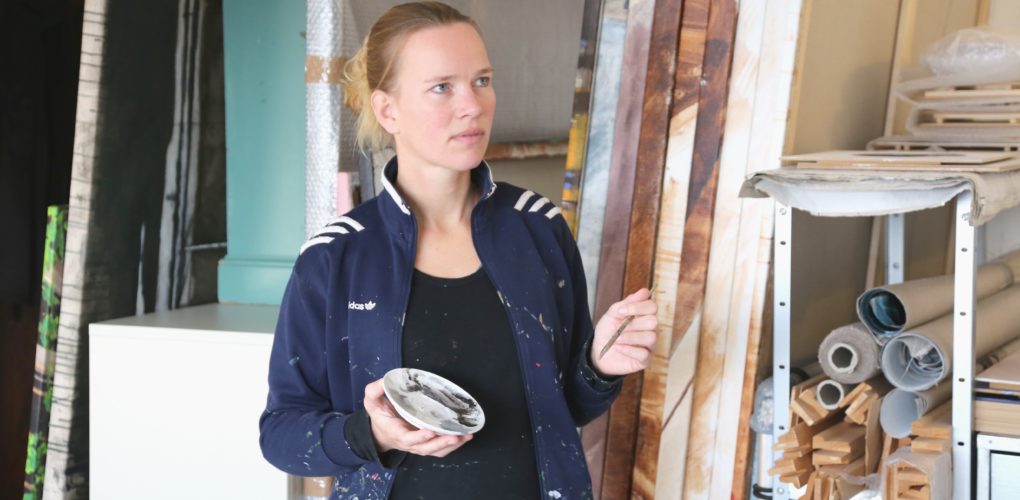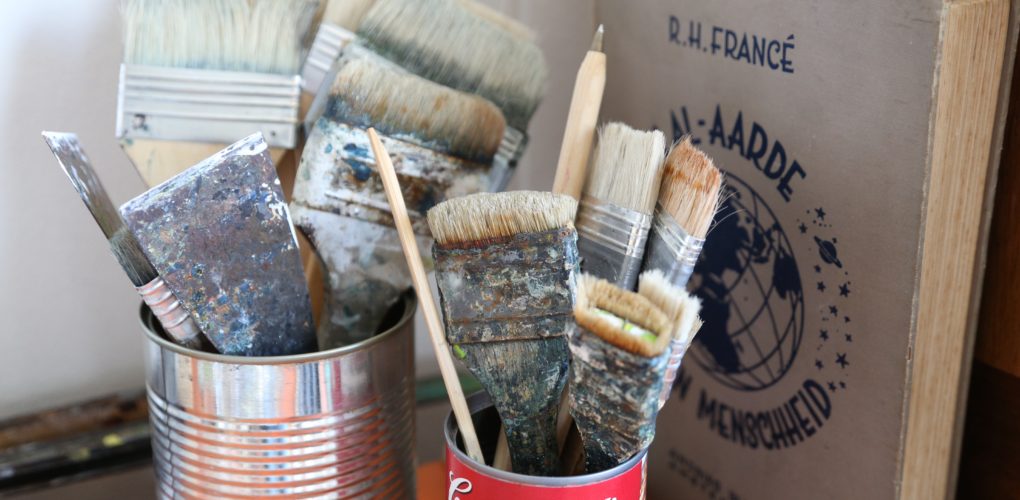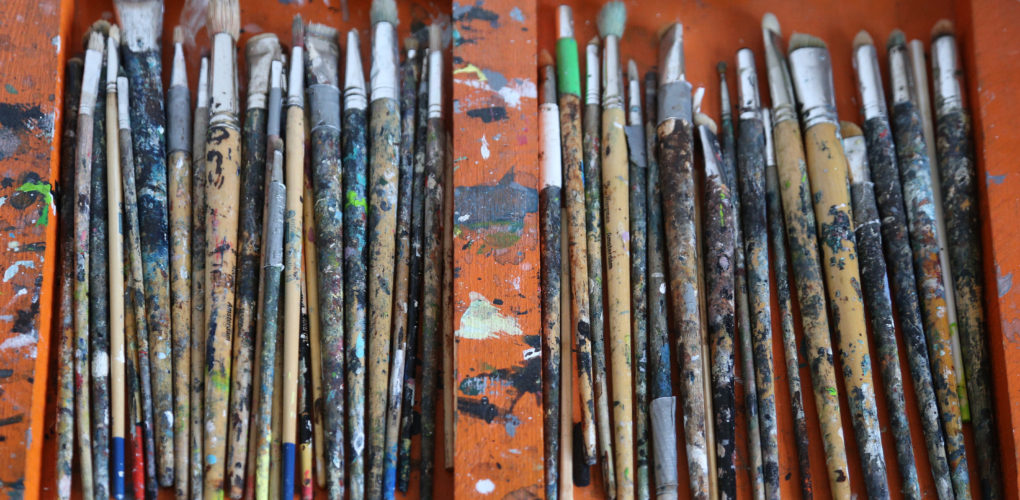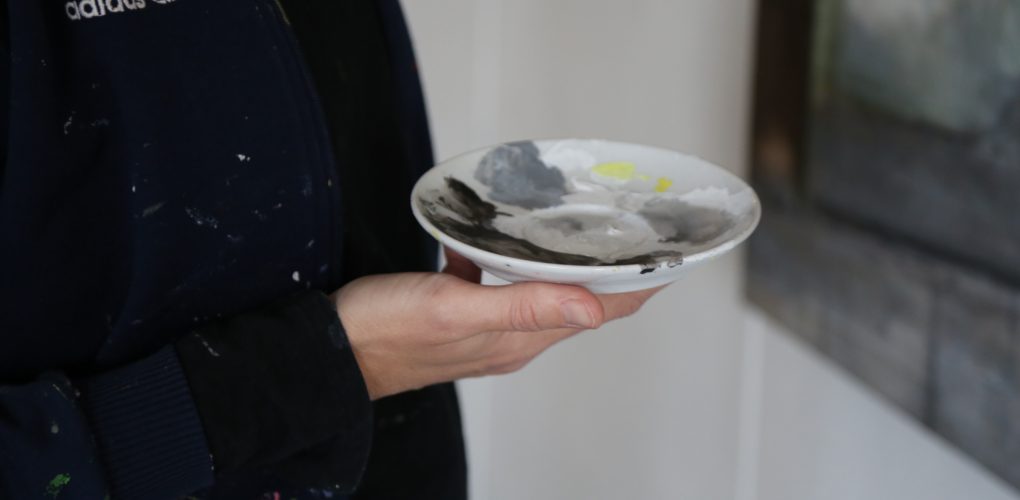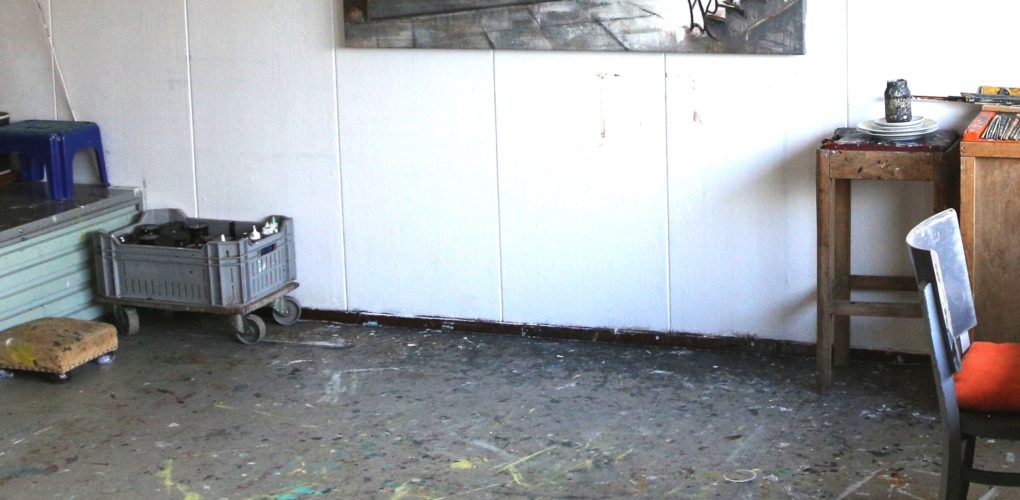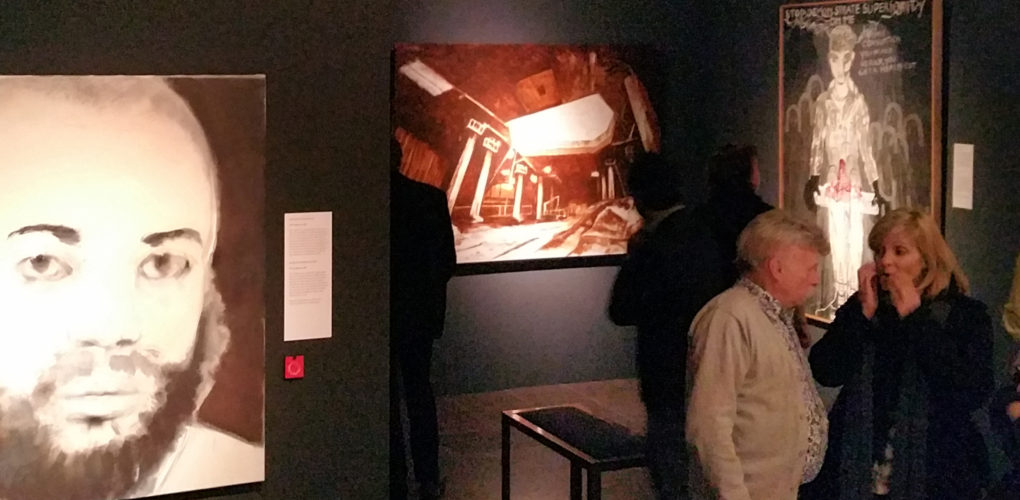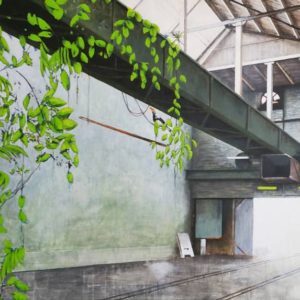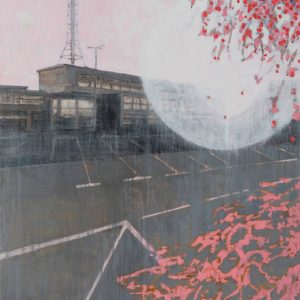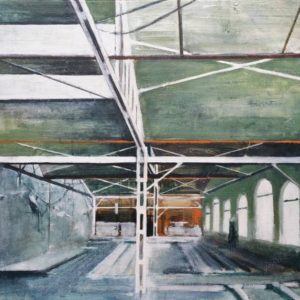One to Watch
 Carolien Wissing’s paintings are shaped by light and architecture
Carolien Wissing’s paintings are shaped by light and architecture
Carolien Wissing finds beauty in the urban environment, capturing the sense of dynamism light can add to otherwise typical city scenes. She is interested in transformation, be it a setting sun or abandoned spaces now reclaimed by nature. Informed by her architectural background, her paintings explore the tension between these man-made structures and the natural environment, preserving what remains of both.
Carolien studied architectural design at the Academy of Fine Arts in the Netherlands. Her work has been shown in group exhibitions at the Amsterdam Museum, Over het IJ Festival, Art Rotterdam, and the Affordable Art Fair Amsterdam, as well as in solo exhibitions at Rijkswaterstaat Rotterdam and City Hall Amsterdam, among others. Carolien’s works can be found in the Amsterdam Museum and many private collections.
What are the major themes you pursue in your work?
First of all my work is about light. My eye is always struck by the way light either shapes, fades, amplifies or brings our world to life. The sun going down can blow away a solid concrete structure. A deer at night becomes magical by its illumination. My architectural training in art school still resonates in most of my paintings. Cityscapes trigger me most. While biking or skating around town it often occurs to me how small we are, and yet we are building these huge structures. Amazing what human beings are capable of.
My latest work reflects another theme: the decay of the man-made world reclaimed and overgrown by nature. The mesmerizing beauty of these abandoned places, to me, is hard to resist. I always find it exciting to sneak in and sense the atmosphere of the past and the power of nature overgrowing it. When the sunlight adds the last layer of beauty, my paintings are born.
What was the best advice given to you as an artist?
Making a great painting is a combination of craftsmanship, creating a great aesthetic experience, and talent, which makes it art. I once worked for a famous Dutch painter who taught me the art of painting the old fashioned way. I spent day after day in his studio painting the first seven layers of his work. After a week of hard work he would come in and within a few hours he would add the magic to the composition I had been working on so long. The hard work is needed to get depth in colors, to strengthen the composition and to get light and shading exactly like you want it. But within the last day, it all comes to life and it starts to resonate.
Also, once you lean backwards too much, this will show in your work and it won’t be that interesting anymore. So you have to keep reinventing yourself, remain sharp and eager. Keep on learning, and don’t forget to enjoy yourself while you are at it.
Prefer to work with music or in silence?
This depends on the stage of painting I am in. When I start with a painting I need to be very sharp. Making mistakes at this point will cost me dearly, because the promise of what I see in my mind needs to be reflected on canvas in a short period. Once it is there in a basic way and I know I won’t lose it, I can spend a long time developing and elaborating things. At this point I am a fulltime music addict, it can be anything from Mussorgsky to Röyksopp. I feel every note in my veins.
If you could only have one piece of art in your life, what would it be?
Pretty much all the paintings of Ilja Repin are stunning and I would instantly accept anything, but the one that comes in mind is the portrait of Composer Mikhail Glinka. When I saw this work for the first time in the Groninger museum in the Netherlands in 2001, I forgot everything around me. I kept looking into the details, the spoon in the glass, the newspaper. It felt like the vibrant presence of both painter and portrayed person where there. When a painting has both ingredients, when it is technically outstanding and when it animates, it can truly elevate people.
Who are your favorite writers?
Actually I am a horrible reader. I love books and I keep on buying them, but often I am too jumpy or too easily bored when it comes to reading, so a lot of books end up half-read in my closet. A few books that I did read in one go are ‘Solo’ by Aebi Tania, ‘Life of Pi’ by Yann Martel and ‘Nooit meer slapen’ by the well- known Dutch writer W.F. Hermans. I read this when I was still in high school and recently a film came out about it called ‘Beyond Sleep.’ I was surprised the story still had the same strong impact on me. It is about a young man who takes a deep dive into nature, hoping to unravel a great physical problem. These kind of ‘man versus nature’ stories always interest me. Humans are both weak and strong at the same time. It is interesting to challenge these facts of life.
